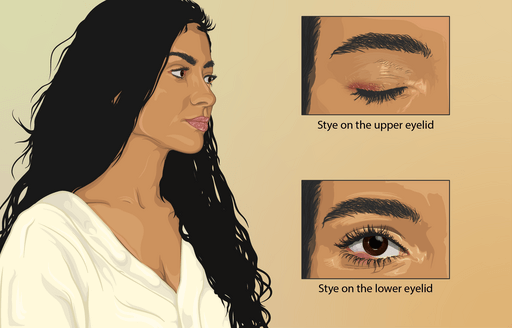Are you plagued by styes but wish to avoid steroid injections, lancing, or antibiotics? In this blog post, we’ll explore a scientific yet natural alternative that could offer a solution. Styes, those pesky pimples or pustules on your eyelids, often involve blocked sebaceous glands, the tiny oil factories of your body. While they typically resolve within a week, recurrent styes demand a closer look.
Understanding Styes: The Root Causes
Let’s delve into the mysteries of styes. What causes them to repeatedly plague some individuals? To uncover the truth, we need to ask key questions. Why does a sebaceous gland become obstructed? Why does the staph bacteria, often found in this particular area of the eyelid, trigger an infection here more than elsewhere in the body?
Here’s where the scientific trail leads us: diabetics face a significantly higher risk of styes. They also contend with increased odds of staph infections and cystic acne, akin to the stye problem but located on the face. Interestingly, diabetics are also prone to boils and cysts. The connection? It’s all about the immune system.
Vitamin A: The Missing Link
Vitamin A plays a pivotal role in our quest to understand styes. A deficiency in this essential nutrient can lead to hyperkeratosis, the roughening of skin tissue in the ducts of sebaceous glands. This deficiency can clog these glands, leading to the buildup of oil and resultant inflammation. Vitamin A governs the epithelial layer of our skin, both externally and internally, such as beneath the eyelid. A study even revealed a significant deficiency of vitamin A in those with styes compared to those without.
Diabetes and Styes: A Complicated Relationship
Now, let’s explore the connection between staph infections and diabetes. Diabetics often face impaired immune reactions due to high blood sugar levels. Insulin resistance, common in diabetics, causes an internal insulin deficiency, which hinders immune function. Injecting insulin and normalizing blood sugar levels can restore the immune system’s strength.
Vitamin D, Zinc, and Styes: Allies in Prevention
Vitamin D deficiency is associated with various eye issues, including glaucoma, cataracts, and increased susceptibility to infections, including styes. Zinc, on the other hand, may not prevent styes initially but can bolster your immune system against recurrent outbreaks.
Optimal Diet: Your First Line of Defense
So, what’s the optimal approach to stye prevention? Start by transforming your diet. Cut back on sugars and embrace a healthier version of the ketogenic diet. Research has shown that sugar consumption can elevate staph bacteria levels, potentially compromising your immune system. Additionally, excess sugar can increase androgen levels in females, potentially leading to excess sebum production—the very oil buildup we aim to control.

Sources of Vital Nutrients
Obtaining adequate vitamin A can be challenging. While beta-carotene is found in kale and spinach, it’s the active form, retinol, that we need. It’s abundant in beef liver, egg yolks, and cod liver oil. Additionally, zinc deficiency, alcohol consumption, and antibiotic use can deplete vitamin A levels.
The Holistic Approach
In summary, the best approach to stye prevention encompasses dietary adjustments, supplementation, and natural remedies. Transition to a low-carb, ketogenic diet to regulate blood sugar and androgen levels. Consider cod liver oil and zinc supplementation to address vitamin A and D deficiencies and fortify your immune system. As a quick relief remedy, apply garlic (carefully, avoiding contact with your eye) for its potent antibacterial properties or use a cooled green tea bag on the affected area.
Incorporating these strategies into your routine can help you bid farewell to recurring styes naturally and scientifically. Remember, your path to stye-free eyes begins with a holistic approach to your overall health.
